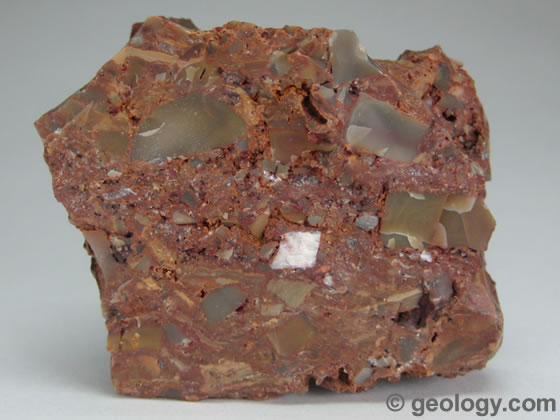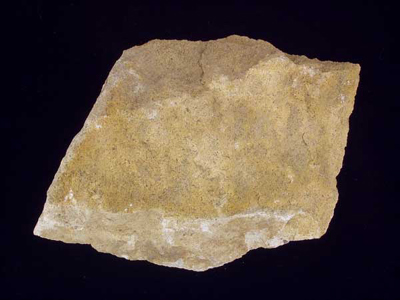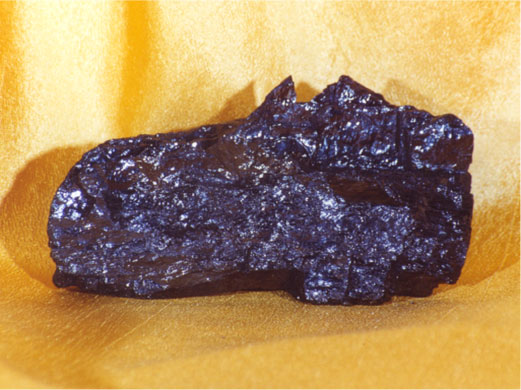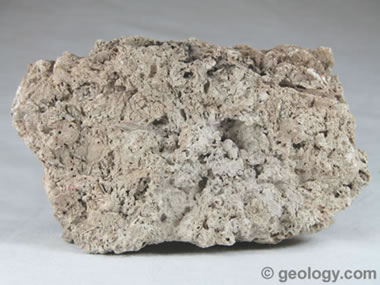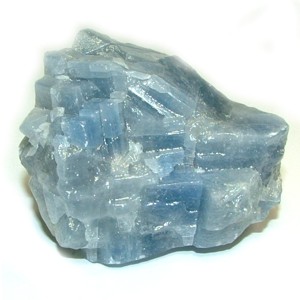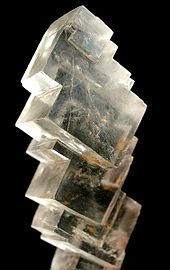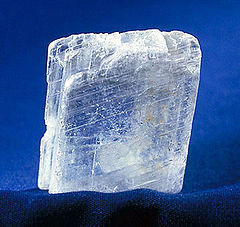Formation of Sedimentary Rocks Sedimentary rock formation begins with igneous, metamorphic, or other sedimentary rocks. When these rocks are exposed at the earth’s surface they begin the long slow but relentless process of becoming sedimentary rock. Weathering
All rocks are subject to weathering. Weathering is anything that breaks the rocks into smaller pieces or sediments. This can happen by the forces of like wind, rain, and freezing water. Deposition
The sediments that form from these actions are often carried to other places by the wind, running water, and gravity. As these forces lose energy the sediments settle out of the air or water. As the settling takes place the rock fragments are graded by size. The larger heavier pieces settle out first. The smallest fragments travel farther and settle out last. This process of settling out is called deposition. Erosion
The combination of weathering and movement of the resulting sediments is called erosion. Lithification
Lithification is the changing of sediments into rock. There are two processes involved in this change. They are compaction and cementation. Compaction
Compaction occurs after the sediments have been deposited. The weight of the sediments squeezes the particles together. As more and more sediments are deposited the weight on the sediments below increases. Waterborne sediments become so tightly squeezed together that most of the water is pushed out. Cementation happens as dissolved minerals become deposited in the spaces between the sediments. These minerals act as glue or cement to bind the sediments together. The process of sedimentary rock formation takes millions of years to complete only to begin a new cycle of rock formation.
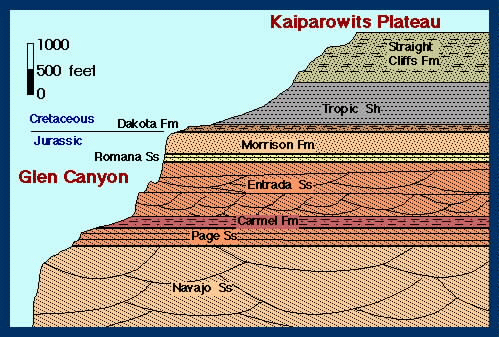
Classification of Sedimentary Rocks Based on the processes responsible for their formation, sedimentary rocks can be subdivided into four groups: clastic sedimentary rocks, biochemical (or biogenic) sedimentary rocks, chemical sedimentary rocks and a fourth category for "other" sedimentary rocks formed by impacts, volcanism, and other minor processes. 
Clastic Sedimentary Rocks Clastic sedimentary rocks are composed of silicate minerals and rock fragments that were transported by moving fluids (as bed load, suspended load, or by sediment gravity flows) and were deposited when these fluids came to rest. Clastic rocks are composed largely of quartz, feldspar, rock (lithic) fragments, clay minerals, and mica; numerous other minerals may be present as accessories and may be important locally. Clastic sediment, and thus clastic sedimentary rocks, are subdivided according to the dominant particle size (diameter). Most geologists use the Udden-Wentworth grain size scale and divide unconsolidated sediment into three fractions:gravel (>2 mm diameter), sand (1/16 to 2 mm diameter), and mud (clay is <1/256 mm and silt is between 1/16 and 1/256 mm). The classification of clastic sedimentary rocks parallels this scheme; conglomerates and breccias are made mostly of gravel, sandstones are made mostly of sand, and mudrocks are made mostly of mud. This tripartite subdivision is mirrored by the broad categories of rudites, arenites, and lutites, respectively, in older literature. Subdivision of these three broad categories is based on differences in clast shape (conglomerates and breccias), composition (sandstones), grain size and/or texture (mudrocks). Pictures on the right: Top (Breccia), Bottom (sandstone)
| |
Biochemical Sedimentary Rocks Biochemical Sedimentary Rocks are formed from organic processes that involve living organisms producing the sediments. These living organisms can be snails and clams whose discarded calcium carbonate shells can form limestone. It also includes swamp plants whose organic debris can produce coal if conditions are right. Although the origin of the sediments are organic, most of the chemicals that the living organisms used to produce their shells or their body parts have origins from previous rocks. Thus these are sedimentary rocks, but with a biogenic intermediate so to speak.
Most types of limestone are formed from the calcareous skeletons of organisms such as corals, mollusks, and foramanifera.Coal which forms as plants remove carbon from the atmosphere and combine with other elements to build their tissue.Deposits of chert formed from the accumulation of siliceous skeletons from microscopic organisms such as radiolara and diatoms.
Pictured on the right: Top (coal), Bottom (limestone) | |
Chemical Sedimentary Rocks Unlike most other sedimentary rocks, chemical rocks are not made of pieces of sediment. Instead, they have mineral crystals made from elements that are dissolved in water. The water in the oceans, lakes, and ground is often full of dissolved elements. All sorts of things can dissolve into water. If you put a spoonful of salt into water, the salt will eventually dissolve. Seawater tastes salty mainly because there are salty minerals such as halite dissolved in it. Sometimes water becomes so full of dissolved elements that they will not all fit. Some are not able to remain dissolved and form solid mineral crystals. This usually happens when some of the water has evaporated away, leaving less room for the dissolved elements. If enough water evaporates, they do not all fit and some form crystals of minerals such as halite, gypsum, and calcite. Pictured on the right: Top (Halite), Bottom (gypsum) Pictured underneath: Calcite
| |
"Other" Sedimentary Rocks
A Pyroclastic flow is a fast-moving current of superheated gas and rock (collectively known as tephra), which reaches speeds moving away from a volcano of up to 450 mph. The gas can reach temperatures of about1,830 °F. Pyroclastic flows normally hug the ground and travel downhill, or spread laterally under gravity. Their speed depends upon the density of the current, the volcanic output rate, and the gradient of the slope. They are a common and devastating result of certain explosive volcanic eruptions.
Location of Sedimentary Rocks A majority of the land on Earth is covered by a thin, to miles thick, veneer of sedimentary rock. Road cuts, surface mines, and river banks are a few locations where the underlying sedimentary rock is revealed. Most of the seafloor is also covered by a layer of sedimentary rock, which covers the ocean floor basalts.
Donations!(its as simple as clicking the yellow button and giving me your money)
Thank you for taking time to look at my website! If you really enjoyed it than you may want to donate to the Mason Power foundation. This foundation is to help Mason in his time of need. Any donations are acceptable tho so don't be shy! your donation will help. $1 dollar gives Mason a meal for a week, $5 gives him a place to sleep for a month, $400 gets Mason a new xbox, come on guys don't wait Mason needs your help so he doesn't go with out, also for every donation Mason promised to be nice to an Animal, or a cop for the entire day. Thanks Guys! and Mr. Swafford I know you have money to donate to this inspirational foundation |


